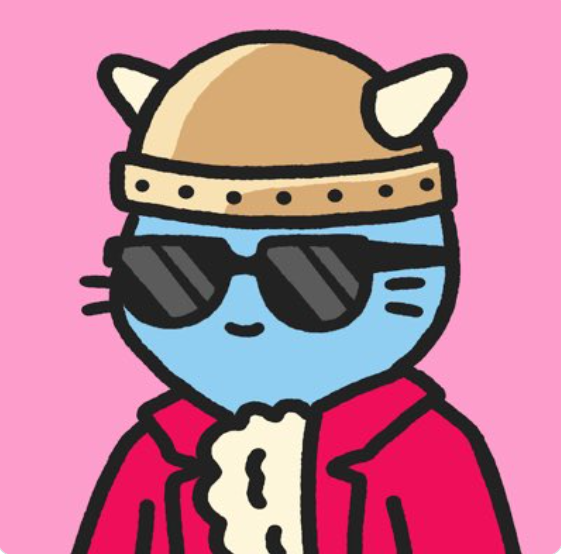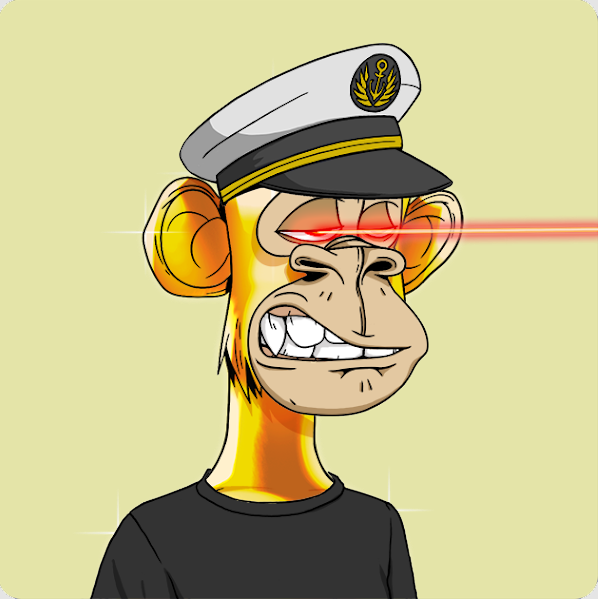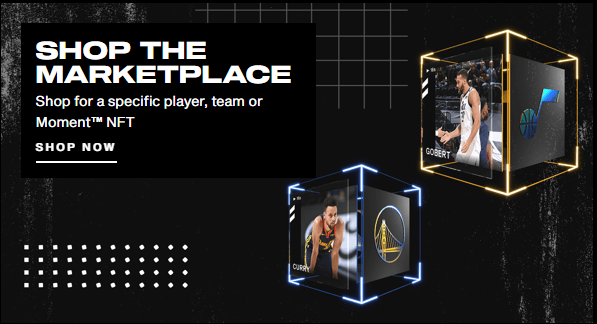Non-Fungible Tokens: What’s Behind the New Crypto Craze?
One of the most interesting phenomena to have emerged in the crypto space has been the rise and rise of NFTs or non-fungible tokens in 2021. The web is abuzz with chatter about NFTs. What are they? How do they work? Are they just a passing fad? Do they hold any value? Are they worth the investment? Even seasoned crypto investors and novices in the industry are intrigued by this new asset class.
Amongst crypto enthusiasts, NFT is the hottest buzzword at the moment. And the amount of money being poured into NFTs seems to suggest that some people can already see the gold amidst all the maze. Consider this, an NFT was sold for $90 million by the digital artist Beeple in a Christie’s auction. Kings of Leon packaged their album as an NFT and sold it for $2 million. Throughout the world, artists, creators and celebrities are translating their work into NFTs and selling them for crazy money.
NFTs aren’t a new innovation. They have been around for quite some time but it is only this year that the market for items such as music, digital art pieces and commemorative items on the blockchain exploded and gained commercial currency.
What are Non-Fungible Tokens?
To understand, non-fungible tokens, we first need to understand what fungible or fungibility means. Something that is fungible is exchangeable or replaceable. For instance, a coin or a laptop or a kit kat is a fungible commodity. So is a car. Well, classic car enthusiasts will insist that some classic cars are simply non-fungible. When we say something is fungible, we mean that you can exchange it for an exact replica. A lot of commodities in the world are fungible.
A non-fungible item is therefore an irreplaceable and one-of-a-kind object. A prized art piece such as the Monalisa is a one-of-kind masterpiece that is irreplaceable and it is therefore non-fungible. Musical compositions are also non-fungible. Every musician produces a unique composition or rendition that cannot be replicated. You can dub the music or remaster it but there will always be only just one irreplaceable original from the original singer.
To capitalize on the NFT craze, many celebrities are now launching their own NFTs and selling them for thousands or even millions of dollars. So what does a non-fungible token really mean?
A non-fungible token (NFT) refers to digital assets consisting of packages of data that represents real products in the real world as well as in the digital world. NFTs implement cryptographic technology to establish the proof of ownership of the product. The NFT proves that the real or digital product behind it is the original thing and a genuine product. It is the equivalent of the statement of authenticity used in the art world to prove that an art piece is the original.
The non-fungible token cryptographically assigns and proves ownership of a digital asset. Someone might reproduce the asset, take pictures of it or even claim it but the non-fungible token will always prove the true and original owner of the digital good.
Unlike real world art pieces, non-fungible tokens do not have any tangible forms on their own even though they can be bought and sold online. It is just a token with a proof of ownership of the actual digital art or creation.
The NFT allows the buyer to own the original. The blockchain provides built-in authentication that offers proof of ownership. Just like the collector in the real world, a buyer of NFT gets exclusive ownership rights or the digital bragging rights for the digital assets and some people are willing to pay millions for these bragging rights.
Non-fungible tokens can also be used by people who want to trade unique digital products without having to go through the complex onboarding process that is often associated with the centralized trading platforms.
Unique and irreplaceable, NFTs are finding wide applicability in wide-ranging industries. Its immediate beneficiaries include celebrities, musicians, content creators and gamers. A lot of items of modern interest, particularly of the creative kind, are being sold as NFTs.
The virtual NFT tokens can include anything from songs to artworks, animations, movies, action clips, GIFs, photographs and even social media posts like in Jack Dorsey’s first tweet which netted millions of dollars.
just setting up my twttr
— jack (@jack) March 21, 2006
Is Jack’s rather meaningless tweet worth anything let alone $2.9 million? Some think it is worth something and that’s the whole concept behind the NFT craze.
This is not just a tweet!
I think years later people will realize the true value of this tweet, like the Mona Lisa painting https://t.co/vnA5pz3esQ
— Sina Estavi (@SinaEstavi) March 22, 2021
Basically, anything that can be sold digitally can be packaged and sold as an NFT.
How NFTs Work
NFT’s leverage the blockchain and cryptocurrency to track digital ownership and to generate scarcity in the digital asset.
Non-fungible tokens are one of the most successful implementations of smart contracts. Non-fungible tokens are stored on the blockchain and the transaction is virtually impossible to forge since the public ledger is maintained by countless computer nodes across the world. They enable the verification and authentication of creative content.
The non-fungible tokens typically exist on the Ethereum blockchain. There are other cryptocurrencies with non-fungible tokens but Ethereum is the market leader at the moment. Just like Bitcoin, Ethereum is a cryptocurrency and its smart contracts-based blockchain supports the implementation of NFTs.
NFTs run on the same blockchain as the ET coin but they store extra information that makes them work differently from the cryptocurrency.
Although it is currently dominant in the NFTs marketplace, it is not just the Ethereum blockchain that supports NFTs. There are other blockchains that have their own NFTs implementations.
NFTs Create Scarcity
Because they are unique and one-of-a-kind items, they are popular with digital collectors who need them for the bragging rights and for commercial uses. Rather than getting the actual item like in the real world, the NFT buyers get a digital file that includes the art that is associated with the NFT.
This digital file contains unique information that makes it possible to verify the NFT ownership on the relevant blockchain. Specific owner information can also be stored in this digital file. It is possible, for instance, for artists to sign their artwork by incorporating their signatures in the non-fungible token’s metadata. The NFT also features smart contracts that will enable the creator or owner to earn a cut of any future sales.
Differences Between NFTs and Cryptocurrencies
Although both exist on the blockchain and both are tokens, non-fungible tokens should not be confused with cryptocurrencies. NFTs can, indeed, be purchased using cryptocurrencies.
Cryptocurrencies leverage fungible tokens and as a result, you can exchange or trade one cryptocurrency for the other. Each token of a cryptocurrency is exactly the same as the other and will represent the same amount of value. It is the fungibility of the cryptocurrencies, similar to that of the fiat currencies, which makes them a trusted currency for performing transactions on the blockchain.
As their name suggests, non-fungible tokens are simply not fungible or not exchangeable. Every token in an NFT is unique and different just like a prized piece of painting. Every non-fungible token will have a unique digital signature that makes it impossible for them to be exchanged for a similar or equal token. If you receive two non-fungible tokens, these would be unique in their own right and would not be representative of the same digital content however similar they may be. This obtains even if the two tokens are perfect copies of the same digital file.
Uses of non-fungible tokens
Non-fungible tokens find applications in varied blockchain use-cases. When a buyer purchases the NFT of an asset, they will be securing their proof of ownership of the item. Non-fungible tokens or non-exchangeable tokens are most commonly used in digital art. This is a type of art is popular with Twitter avatars such as Mike Tyson’s cool cat. Just like in the real world, people buy non-fungible tokens as status symbols and for internet bragging rights.

Some buyers have managed to transform their NFT purchases into a profitable venture. One case in point is was the Bored Ape No. 3749 which grossed over 450% in a matter of weeks.

NBA’s Top Shot collection of iconic GIFs has grossed close to $1 billion in less than one year.

Artists across different domains have now embraced used NFTs and they are netting millions of dollars from NFT sales. NFTs are the frameworks that make digital art such as internet memes, cartoons, and other caricatures scarce and legitimate.
We are also seeing a rising usage of NFTs in contemporary art auctions such as images, animations, and in some cases, even tweets.
Non-fungible tokens are also being used in real-life assets such as games, tickets to events, music clips, and videos. There are NFTs for domain names, real estate as well as virtual land.
In recent months, we are seeing NFTs being used heavily and lucratively in prints and photography. Photographers are leveraging NFTs to create new markets for their work. Projects that have consumer value are seeing the most success when it comes to NFT usage.
How NFTs are Created
If you are a creator who wants to generate a non-fungible token for your digital artworks or digital assets, you must use any of the NFT marketplaces or platforms to create/mint your corresponding NFTs.
The NFT creation process entails minting a digital asset on a particular blockchain such as the Ethereum blockchain. This process requires a digital wallet and cryptocurrencies that will make it possible for you to store your NFTs and cryptocurrencies.
NFTs can be hosted in different blockchains. The most popular one is, of course, Ethereum. There is Ethereum’s MetaMask wallet that is widely used in the NFT market and can be downloaded via a Chrome extension or App Store.
Artists who wish to mint an NFT for a digital asset must buy a fractional amount of Ether to cover the ‘gas fees’. This foots the cost that is associated with the minting of the NFT which places the minted token on the Ethereum blockchain. The gas fees also cover the cost of listing the NFT for sale.
When a minted NFT is added to the Ethereum blockchain, a smart contract is also added to the blockchain which contains a set of actions as well as certain conditions to be met. The smart contract is often coded with details on the limitations of the usage of the NFT. When these conditions have been met, an action happens and the blockchain is subsequently updated with the transaction.
NFT creators can monetize their tokens in two ways. They can list them for sale in an NFT marketplace or they can link the NFT to a royalty agreement and earn royalties with every sale. The best place to buy or sell NFTs is in the NFT marketplaces.
How to Sell NFTs
You need a digital wallet to access NFT marketplaces. Having a digital wallet when you want to trade NFTs also streamlines the process of connecting to these marketplaces and authenticating your identity. It is the wallet that gives you access to these markets. When selling an NFT, one has to pay a transaction fee in ETH gas. The ETH gas is a denomination of the Gwei token, representing one billionth of ETH.
Upon selling an NFT, its new owner gets the possession via a smart contract. An NFT seller must, thus, ascertain that the smart contracts clearly delineate the rights which are being assigned as part of the non-fungible token. In most transactions, the NFT holder will only get a non-exclusive license to the underlying intellectual property rights of the asset represented by the NFT. This license is usually mostly for non-commercial uses.
How to Buy NFTs
The process of buying NFTs varies depending on the type of NFT you plan to purchase as well as on the platform where you are buying your non-fungible tokens.
Non-fungible tokens can be purchased using either a fiat currency or a cryptocurrency. To purchase an NFT, you must also have a crypto wallet where you will store the cryptocurrencies and the NFTs you are purchasing.
Before you buy a non-fungible token, you must first buy some cryptocurrency that you will use in the transaction. You must acquire a cryptocurrency that is accepted by your NFT provider. In most cases, this will be the ETH token for the Ethereum blockchain.
You can purchase cryptocurrencies with a credit card in any of the leading online exchanges including eToro, Coinbase, and Binance. The exchanges levy a small percentage of the transaction whenever you purchase crypto.
Once you have bought your cryptos, you can move them to your preferred crypto wallet. Once this is done, most NFT platforms will easily connect to your crypto wallet. After the connection has been established, you can browse the leading NFT marketplaces and place your bids for any NFT that you might be interested in buying.
The crypto wallet is like a digital passport that allows you to interact and transact with various NFT platforms. If you are planning to use non-Ethereum NFT marketplaces, you simply have to swap ETH tokens for the relevant blockchain tokens.
What are the Main NFT Marketplaces?
Most NFT marketplaces have listings of NFTs on sale. Some of these have been meticulously curated for the best value to the buyer.
Like other digital marketplaces, most NFT marketplaces usually hold auctions where you can submit bids for the NFTs that you wish to purchase. It is advantageous to buy an NFT from a primary market as this instantaneously increases its resale value once it goes on sale in the secondary marketplaces. This is particularly true when it comes to the NFTs that are in high demand. The main drawback with buying an NFT from a primary market is that it is generally difficult for the buyer to estimate the real demand for the digital asset represented by the NFT. If you go on a buying spree without carrying due diligence, you might end up acquiring lots of trash NFTs that seriously don’t have any value in any marketplace. A secondary market is a more logical gauge of value as prospective buyers can compare the values of previous NFT sales.
There are a number of popular NFT marketplaces where you can go shopping for your NFTs. These include: –
- Rarible
- Foundation NFT
- OpenSea
- OpenSea
- AtomicAssets
- Nifty Gateway
- CryptoSlam
- NBA Top Shot
- SuperRare
The majority of these marketplaces are hosted on the Ethereum blockchain and are thus Ethereum dApps.
Some of these online exchanges have unique specializations or niches. OPenSea, for instance, is an NFT marketplace for collectibles and rare digital items. NBA Top Shot specializes in selling NFT GIFs for some of the most iconic NBA highlights.
Rarible presents NFT buyers with a ‘democratic’ and open marketplace where artists and creators can issue and sell their NFTs. The platform issues its RARI tokens that enable both creators and artists to make a contribution on features like community rules and fees.
Foundation NFT is a marketplace where artist have to get “upvotes” or an invite from fellow creators before they can post their art. This is an exclusive community with a relatively higher cost of entry where artists must also buy “gas” to mint their NFTs. On the positive side, this means it is likely to feature great works of art. NFTs on Foundation NFT are usually sold in live auctions. Users bid for the artwork with ETH and they can store their NFTs in a Metamask wallet. Artworks purchased on Foundation NFT can be resold in other NFT exchanges such as Nifty Gateway or OpenSea.
https://virtualrealitytimes.com/2021/11/27/non-fungible-tokens-whats-behind-the-new-crypto-craze/https://virtualrealitytimes.com/wp-content/uploads/2021/11/Bored-Ape-Yacht-Club-3749.pnghttps://virtualrealitytimes.com/wp-content/uploads/2021/11/Bored-Ape-Yacht-Club-3749-150x90.pngBusinessCryptocurrencyOne of the most interesting phenomena to have emerged in the crypto space has been the rise and rise of NFTs or non-fungible tokens in 2021. The web is abuzz with chatter about NFTs. What are they? How do they work? Are they just a passing fad? Do they...Sam OchanjiSam Ochanji[email protected]EditorVirtual Reality Times - Metaverse & VR
